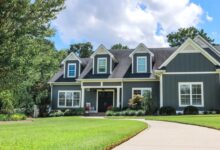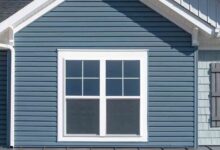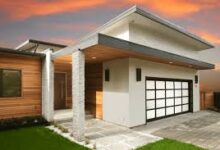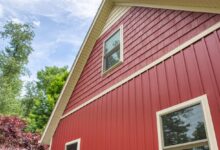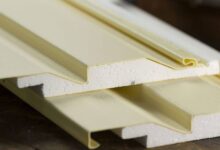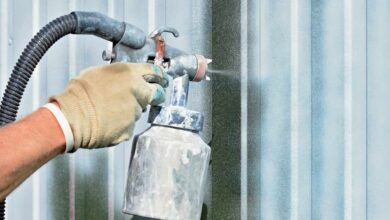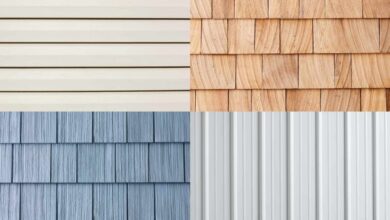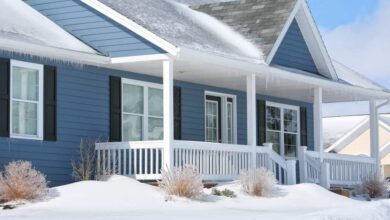Best Siding Materials for Coastal Areas
Living near the coast has its unique advantages, but it also comes with its own set of challenges when it comes to maintaining the integrity of your home. Coastal environments, with their constant exposure to saltwater, humidity, and extreme weather conditions, demand specific materials that can withstand the harsh elements. Choosing the right siding for coastal areas is crucial in maintaining both the aesthetic appeal and structural durability of your home.
This article delves into the best siding materials for coastal homes, with a focus on their benefits, unique features, and how they perform in coastal climates. From moisture resistance to long-lasting durability, we’ll explore various options that can offer your beach house both style and protection.
Key Features of Ideal Siding for Coastal Areas
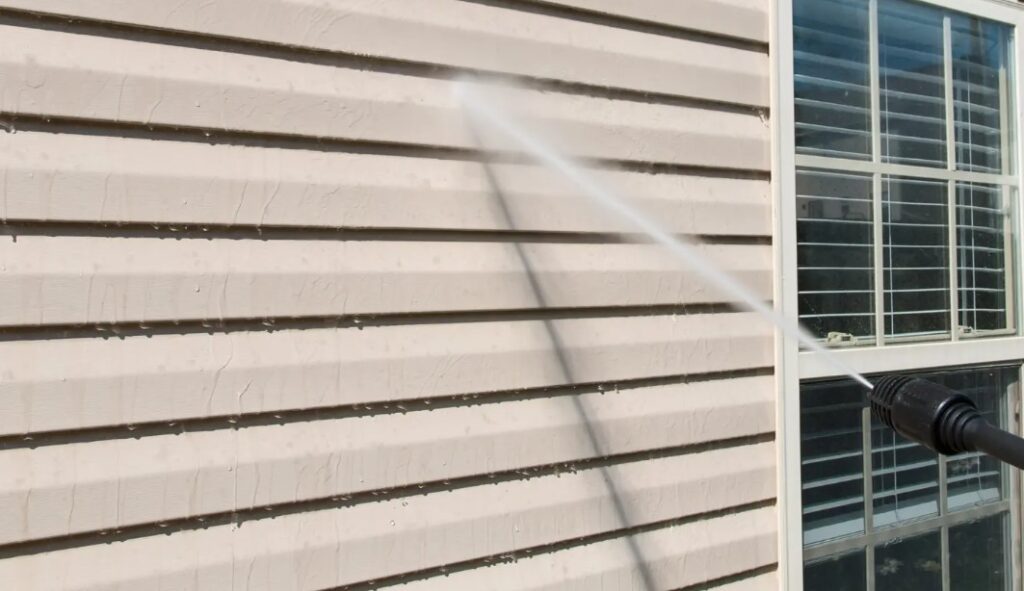
Choosing the right siding for a coastal home is not just about aesthetic appeal; it’s also about ensuring that your home is protected from the elements, which are far more extreme by the coast than in inland areas. The combination of saltwater, high winds, humidity, and frequent storms creates a harsh environment for any building material. This makes it essential to select siding materials that offer specific features tailored to withstand these unique challenges. Let’s take a closer look at the key features that make a siding material ideal for coastal areas:
1. Durability Against Harsh Coastal Elements
One of the most important features to consider is the durability of the siding. Coastal areas are constantly exposed to extreme weather conditions, including high winds, saltwater exposure, and the possibility of severe storms. This can cause significant wear and tear on the exterior of homes.
- Saltwater Resistance: Saltwater is highly corrosive, and over time, many materials can begin to degrade when exposed to the salty air of coastal regions. Ideal siding should have a high resistance to this saltwater exposure, preventing corrosion, rust, and degradation. For example, fiber cement siding is known for its ability to withstand saltwater corrosion, making it one of the best choices for coastal homes.
- Wind Resistance: Coastal areas are also prone to high winds, especially during hurricanes or tropical storms. Siding must be able to resist the impact of strong gusts without becoming loose or damaged. Materials such as vinyl siding and fiber cement are designed with wind resistance in mind, with some products able to handle wind speeds of over 150 mph.
- Impact Resistance: In coastal areas, debris from storms or heavy winds can strike the siding, causing dents or cracks. Siding made from fiber cement or vinyl often has better impact resistance compared to softer materials like wood, making it ideal for areas prone to flying debris.
2. Moisture and Humidity Resistance
The high levels of humidity, combined with the frequent rainfall and saltwater spray, can cause significant damage to siding materials that aren’t moisture-resistant. Over time, untreated or improperly protected siding can absorb moisture, leading to mold, mildew, rotting, and decay.
- Waterproof and Moisture-Resistant Materials: Siding like fiber cement and vinyl are designed to resist moisture absorption, preventing rot and mold growth. Wood siding, especially materials like cedar, offers natural moisture resistance, but it requires regular maintenance (e.g., sealing and staining) to maintain its integrity against moisture.
- Resistant to Warping: Coastal climates with their high humidity can cause some siding materials, like certain types of wood, to warp or bend. To avoid this, it’s essential to choose materials that maintain their shape even in wet conditions. Fiber cement and vinyl are excellent choices in this regard because they don’t warp, crack, or bend when exposed to moisture.
- Drainage and Ventilation: Some materials, like fiber cement, have built-in drainage and ventilation features that prevent water buildup behind the siding, which could otherwise lead to rot or damage to the structure of the home.
3. Resistance to Fading and UV Damage
Coastal areas often receive more intense sunlight than inland areas. UV rays from the sun can cause siding to fade over time, diminishing the aesthetic appeal of your home. This is especially true for homes near the beach, where the combination of sunlight and salty air can accelerate fading.
- UV Resistance: Siding materials such as vinyl siding and fiber cement are designed with UV resistance to prevent color fading. For instance, James Hardie fiber cement siding comes with baked-on color options that resist fading, ensuring that the color stays vibrant even after years of exposure to the sun.
- Maintaining Aesthetic Appeal: Some homeowners prefer a vibrant color palette for their beach houses, often opting for coastal tones like blues, whites, and sandy beiges. With materials that resist UV damage, these colors will stay bright and crisp for longer periods, even in the harshest coastal climates. CertainTeed vinyl siding, for example, comes in a wide range of colors that are engineered to resist fading under intense sunlight.
4. Low Maintenance Requirements
Living in a coastal area often means dealing with constant exposure to harsh weather, which can make maintenance a time-consuming and costly endeavor. Ideal siding for coastal homes should require minimal upkeep to keep it looking its best and performing effectively.
- Ease of Cleaning: Vinyl siding and fiber cement are both easy to clean and require little maintenance. Unlike wood siding, which needs regular painting, sealing, or staining to protect it from moisture, these materials can be simply washed with soap and water to remove dirt, grime, and salt deposits.
- Resistant to Mold and Mildew: Siding materials like fiber cement and vinyl are not only resistant to moisture but also to mold and mildew growth. This is a significant advantage in coastal areas where high humidity can cause other materials to develop mold or mildew, which requires professional cleaning and maintenance.
- No Need for Repainting: While traditional wood siding needs periodic repainting to prevent rot and maintain appearance, fiber cement and vinyl sidings maintain their color and integrity without the need for frequent repainting, saving both time and money in the long run.
5. Insulation and Energy Efficiency
Energy efficiency is an important factor in coastal homes, where temperatures can fluctuate dramatically between the seasons. Siding materials with insulating properties help to regulate the interior temperature, reducing the load on your heating and cooling systems.
- Thermal Insulation: Certain siding materials, such as insulated vinyl siding, help maintain consistent indoor temperatures by providing an extra layer of insulation. This can be particularly beneficial in coastal climates, where temperatures may be hot and humid during summer and chilly during winter.
- Reducing Energy Costs: Insulated siding materials help reduce energy consumption, leading to lower utility bills. They work by blocking heat transfer through the exterior of your home, keeping the interior cooler in summer and warmer in winter. This makes insulated vinyl siding a great option for homeowners in coastal areas who want to enhance energy efficiency while protecting their home.
6. Environmental Considerations and Sustainability
In today’s environmentally conscious world, many homeowners are looking for materials that not only perform well but also contribute to sustainability efforts. Siding materials that are eco-friendly can help minimize your environmental impact, especially important for beach houses located in delicate coastal ecosystems.
- Recycled and Sustainable Materials: Fiber cement and vinyl are often made with recycled materials, offering a more sustainable option for homeowners. Some vinyl siding products are manufactured with a high percentage of recycled content, reducing the environmental footprint of the material.
- Eco-Friendly Treatments: Many fiber cement products are treated with environmentally friendly processes, reducing the use of harmful chemicals or preservatives. For example, James Hardie fiber cement siding uses sustainable practices and materials, ensuring that the product is both high-performing and eco-friendly.
When choosing the ideal siding material for coastal areas, homeowners must consider a combination of features to ensure durability, resistance to moisture, UV protection, ease of maintenance, insulation, and sustainability. Materials like fiber cement, vinyl, and wood siding (with proper treatment) all offer unique advantages, but it’s essential to evaluate which features align with your specific needs.
By selecting the right siding material, you can enjoy a beautiful, low-maintenance, and long-lasting exterior that stands up to the challenges of coastal living while enhancing your home’s curb appeal. Whether you’re protecting your home from the corrosive effects of saltwater or insulating it against fluctuating temperatures, the right siding is an investment that will pay off for years to come.
Best Siding Materials for Coastal Areas
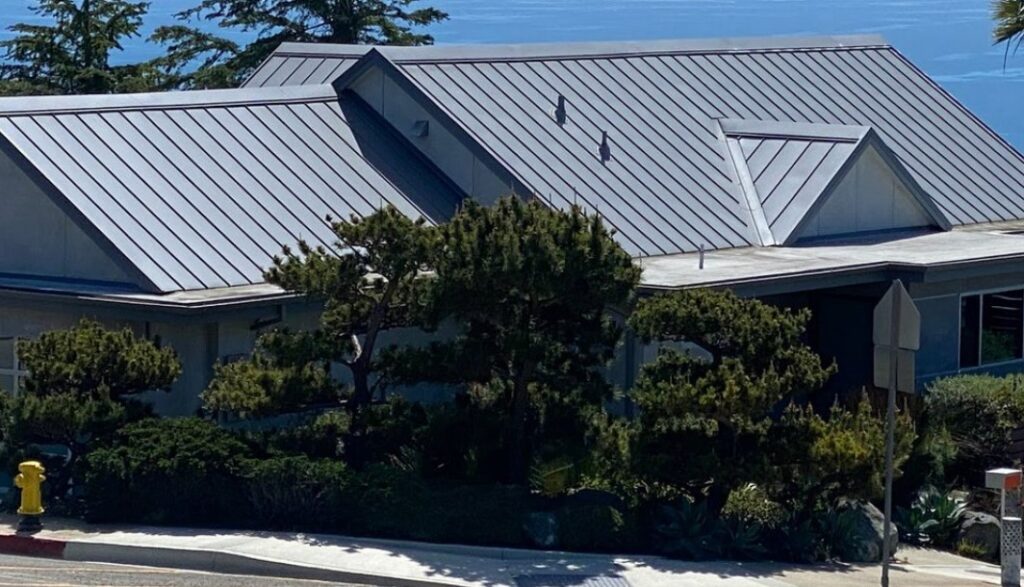
1. Fiber Cement Siding
Fiber cement is often regarded as one of the best choices for coastal areas, thanks to its excellent durability and resistance to moisture, fire, and insects. This siding material is made from a mixture of wood fibers, sand, and cement, creating a solid and reliable surface that can stand up to saltwater exposure.
Product Example: James Hardie Fiber Cement Siding
One of the most popular fiber cement options on the market is James Hardie fiber cement siding. This product is renowned for its resistance to coastal climates, offering long-term durability and excellent performance in both wet and dry conditions.
Features and Benefits:
- Durability: Resistant to moisture, termites, and fire.
- Customization: Available in various colors, textures, and designs to suit different styles of homes.
- Low Maintenance: Requires minimal upkeep, saving homeowners time and money in the long run.
- Moisture Resistant: Prevents warping and rotting, even in humid, salty environments.
Use Case: James Hardie fiber cement siding is an ideal choice for homeowners in coastal regions who are looking for a long-lasting, low-maintenance solution that offers both functionality and aesthetic appeal.
Pros:
- Exceptional durability and resistance to coastal elements.
- Available in many colors and finishes, including beach house siding colors.
- Low maintenance, saving on repairs over time.
Cons:
- Higher upfront cost compared to other materials.
- Installation can be labor-intensive, requiring professional expertise.
Price: The cost of James Hardie fiber cement siding generally ranges from $5 to $10 per square foot, depending on the style and customization.
Where to Buy: You can purchase James Hardie fiber cement siding directly from their website or through authorized dealers such as James Hardie Official Website.
2. Vinyl Siding
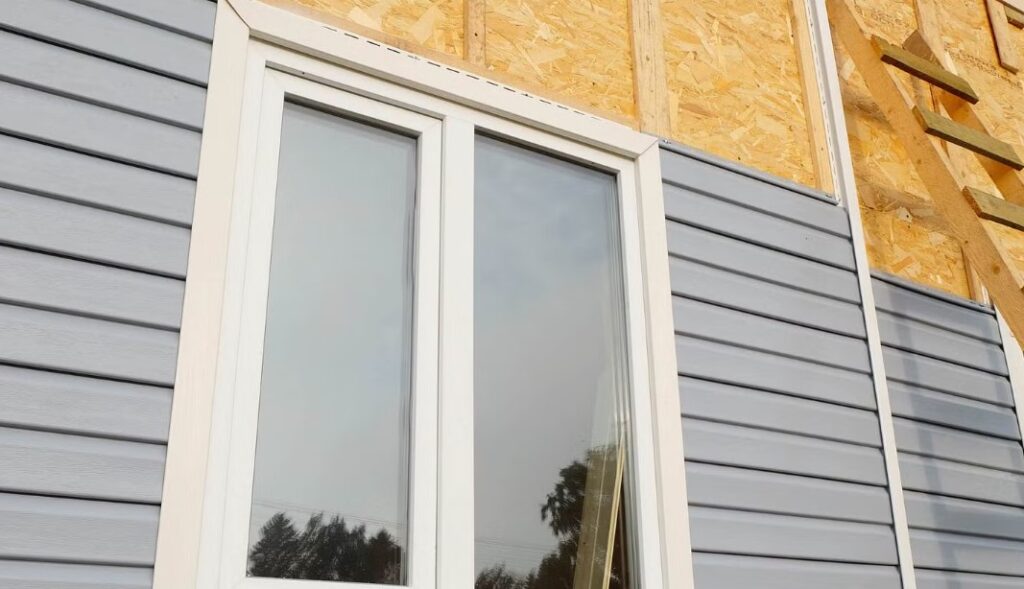
Vinyl siding is another popular material for coastal areas due to its affordability, ease of installation, and resistance to the elements. It is made from a synthetic plastic polymer that provides an excellent defense against moisture and is impervious to saltwater damage. Vinyl siding also offers a variety of colors and finishes that can complement beach house shake siding styles.
Product Example: CertainTeed Vinyl Siding
CertainTeed is one of the leading manufacturers of vinyl siding, offering an extensive selection of styles, colors, and textures. Known for its resilience against extreme weather conditions, CertainTeed vinyl siding is ideal for beachside homes and coastal regions.
Features and Benefits:
- Weather Resistance: Can withstand high winds and heavy rains, making it perfect for coastal climates.
- Energy Efficiency: Some CertainTeed vinyl products come with insulated backing, improving energy efficiency.
- Color Variety: Offers a wide selection of colors, including popular beach house siding colors.
- Low Maintenance: Requires only periodic cleaning to maintain its appearance.
Use Case: If you live in a coastal area and are looking for an affordable, low-maintenance option that will last for years, CertainTeed vinyl siding is a solid choice.
Pros:
- Inexpensive compared to other materials.
- Easy to maintain and clean.
- Available in a range of colors, including beach house shake siding.
Cons:
- May fade over time due to UV exposure.
- Less durable than fiber cement in extreme conditions.
Price: CertainTeed vinyl siding generally costs between $2 to $5 per square foot, depending on the style and insulation options.
Where to Buy: CertainTeed products can be purchased at various retailers such as Home Depot, Lowe’s, and their official site CertainTeed Vinyl Siding.
3. Wood Siding
Wood siding has been a classic option for coastal homes for many years, offering a natural and rustic look that blends well with the beach environment. While wood can be susceptible to moisture and insect damage, modern treatments and finishes make it more durable in coastal climates.
Product Example: Cedar Siding
Cedar siding is often used in coastal regions due to its natural resistance to moisture and insects. It has an inherent beauty that suits beach houses and provides an organic aesthetic that many homeowners prefer.
Features and Benefits:
- Aesthetic Appeal: Provides a natural and warm look that enhances the beauty of beach houses.
- Moisture Resistance: Cedar naturally resists rot, decay, and insect infestation.
- Insulation: Wood siding provides some natural insulation, helping regulate indoor temperatures.
Use Case: Cedar siding is an excellent option for homeowners who want a traditional, eco-friendly material with natural resistance to coastal elements.
Pros:
- Visually appealing, with a natural look.
- Resists rot and insect damage.
- Eco-friendly and sustainable material.
Cons:
- Requires regular maintenance, such as staining or sealing, to preserve its condition.
- Higher cost compared to vinyl and fiber cement.
Price: Cedar siding typically costs between $4 to $7 per square foot, depending on the quality and thickness.
Where to Buy: Cedar siding can be purchased from local lumberyards or online retailers such as Cedar Siding Online.
Benefits of Choosing the Right Siding Material for Coastal Areas
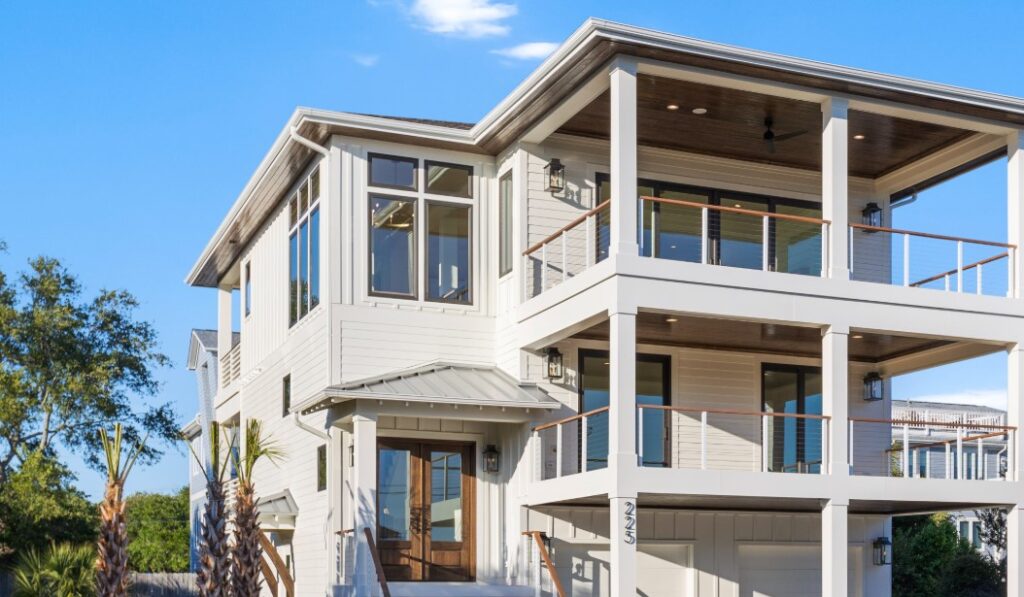
Selecting the right siding material for coastal regions not only enhances the beauty of your home but also ensures that your property remains safe and well-protected from the harsh coastal environment. Here’s why it’s crucial to choose wisely:
- Protection Against Saltwater Damage: Materials like fiber cement, vinyl, and treated wood are resistant to the corrosive effects of saltwater, ensuring the longevity of your siding.
- Moisture Resistance: Coastal areas experience high humidity and frequent rainfall, making moisture-resistant materials essential to prevent mold, mildew, and rot.
- Enhanced Curb Appeal: Whether you prefer the classic look of wood or the sleek finish of vinyl, there are many options available to suit the aesthetic of your beach house.
- Energy Efficiency: Insulated siding options can help reduce energy costs, maintaining a comfortable temperature inside your home without overworking your HVAC system.
Conclusion: Make the Right Choice for Your Coastal Home
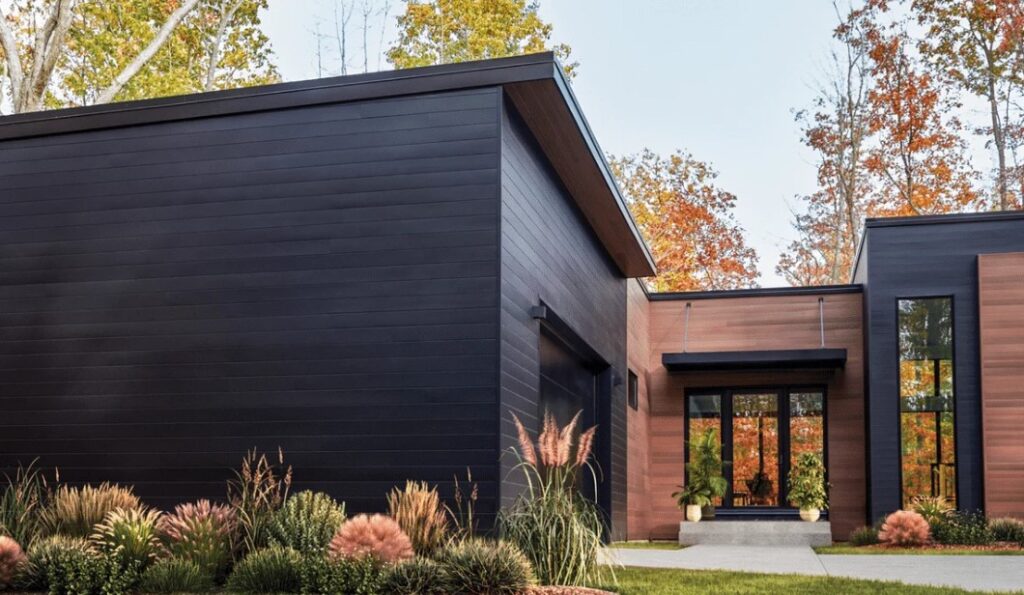
Choosing the best siding materials for coastal areas is an important decision that will affect both the functionality and aesthetics of your home. Whether you opt for the durability of fiber cement, the affordability of vinyl, or the natural beauty of wood, each option offers unique benefits suited to coastal environments.
By considering your climate, budget, and long-term maintenance needs, you can make an informed choice that ensures your beach house stands the test of time, with minimal upkeep and maximum protection from the elements.
FAQs
1. What is the most durable siding for coastal areas?
Fiber cement siding, such as James Hardie, is one of the most durable options for coastal areas. It can withstand high winds, humidity, and saltwater exposure while requiring minimal maintenance.
2. Can I use vinyl siding in coastal regions?
Yes, vinyl siding, particularly brands like CertainTeed, is a good option for coastal areas. It resists moisture, requires little maintenance, and comes in a variety of colors, including beach house siding colors.
3. How do I maintain wood siding in a coastal environment?
Wood siding, such as cedar, requires regular maintenance in coastal regions, including sealing, staining, or painting to protect it from moisture and insects. Regular cleaning and inspections are essential to extend its lifespan.
